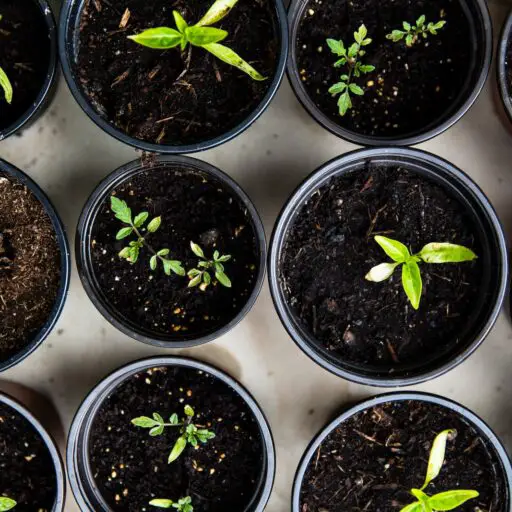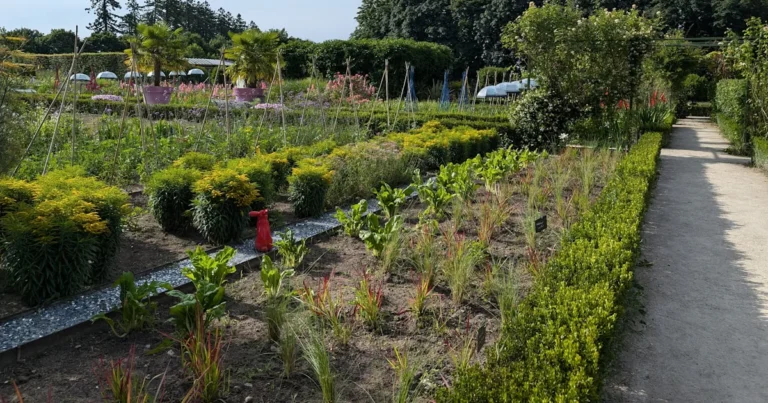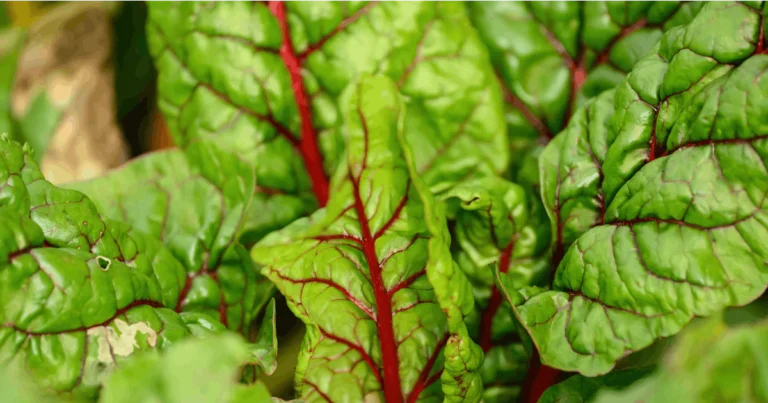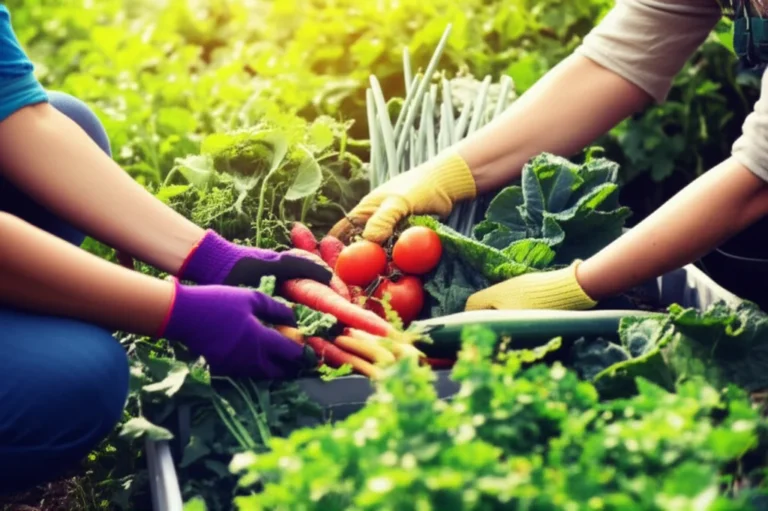Support our educational content for free when you purchase through links on our site. Learn more
Imagine a vacant lot in the heart of your city transforming into a vibrant oasis where neighbors share stories, children learn about nature, and fresh vegetables flourish. Community gardening isn’t just about growing plants—it’s about growing connections, culture, and resilience. From boosting mental health to bridging cultural divides, the social benefits of community gardening ripple far beyond the garden fence, impacting local neighborhoods and global communities alike.
In this article, we’ll uncover 9 powerful social benefits that make community gardens indispensable social hubs. Whether you’re curious about how gardens reduce crime, empower marginalized groups, or contribute to global food sovereignty, we’ve got you covered. Plus, we’ll share inspiring success stories and practical tips to help you start your own garden initiative. Ready to dig in and discover how a simple patch of earth can transform lives? Let’s grow together!
Key Takeaways
- Community gardens foster social cohesion by bringing diverse neighbors together in shared purpose.
- They improve mental well-being through nature contact and purposeful activity.
- Gardens serve as educational platforms for all ages, teaching skills and environmental stewardship.
- They promote inclusivity and cultural exchange, enriching local and global communities.
- Community gardens help reduce crime and increase neighborhood safety by encouraging stewardship.
- They address food insecurity by providing fresh, affordable produce in urban food deserts.
- Gardens empower local voices, boosting civic engagement and community leadership.
- They create intergenerational bonds, connecting youth and elders through shared experiences.
- Globally, community gardens support sustainable development and food sovereignty initiatives.
Ready to start your own garden? Check out these essentials to get growing:
- Gardening Tools: Amazon | Walmart
- Raised Garden Beds: Amazon | Home Depot
- Composting Bins: Amazon | Walmart
Dive deeper into the social magic of community gardening with us—your green thumb awaits!
Table of Contents
- ⚡️ Quick Tips and Facts
- 🌱 Rooting for Change: The Enduring Legacy of Community Gardens
- 🌍 Why Community Gardens are More Than Just Green Spaces: A Global Perspective
- The Social Harvest: Unearthing the Myriad Benefits of Community Gardening
- 🤝 Building Bridges, Not Fences: Fostering Community Cohesion & Social Capital
- 🧠 Nourishing Minds & Bodies: Mental Well-being & Stress Reduction
- 📚 Growing Green Thumbs & Minds: Educational Opportunities & Skill-Building
- 🌈 Cultivating Inclusivity: Bridging Cultural Divides & Promoting Diversity
- 👮♀️ Sowing Seeds of Safety: Enhancing Neighborhood Security & Reducing Crime
- 🗣️ Empowering Local Voices: Community Ownership & Civic Engagement
- 🍎 Harvesting Healthier Habits: Addressing Food Deserts & Promoting Nutrition
- 👵👴 Sprouting Intergenerational Bonds: Connecting Ages Through Shared Spaces
- 🌐 A Global Tapestry: How Community Gardens Impact International Development & Food Sovereignty
- 🌿 The Green Ripple Effect: Environmental Stewardship & Urban Greening
- 💰 From Plot to Plate: Economic Opportunities & Local Food Systems
- 🚧 Weeding Out Challenges: Overcoming Obstacles in Community Garden Development
- 🌟 Blossoming Examples: Inspiring Community Garden Success Stories (Local & Global)
- 🛠️ Digging In: How to Start Your Own Community Garden Initiative
- 🔮 The Future is Green: The Evolving Role of Community Gardens in a Changing World
- ✅ Conclusion: Cultivating a Better World, One Garden at a Time
- 🔗 Recommended Links
- ❓ FAQ: Your Burning Questions Answered
- 📖 Reference Links
Quick Tips and Facts
Welcome to the green heart of community gardening! 🌿 Before we dive deep, here are some quick facts and tips to get you excited about the social benefits of community gardening for local and global communities:
- ✅ Community gardens boost social cohesion by creating shared spaces where neighbors meet, collaborate, and celebrate diversity.
- ✅ Gardening reduces stress and improves mental health through nature contact and purposeful activity.
- ✅ They provide educational opportunities for all ages, from kids learning about plants to adults gaining horticultural skills.
- ✅ Community gardens help address food insecurity by increasing access to fresh produce, especially in urban food deserts.
- ✅ They foster civic engagement and empower local voices, encouraging residents to take ownership of their neighborhoods.
- ✅ Global impact: Community gardening supports sustainable development goals by promoting food sovereignty and climate resilience worldwide.
Pro tip: Start small, involve your neighbors, and watch how your garden becomes a hub of friendship, learning, and local pride! For more on how community gardens benefit global communities, check out our detailed article here.
Rooting for Change: The Enduring Legacy of Community Gardens
Community gardening isn’t a new fad—it’s a time-tested tradition with roots stretching back centuries. From victory gardens during WWII to urban farms sprouting in today’s cities, these shared green spaces have always been about more than just plants. They’re about people, culture, and resilience.
The Historical Sprout 🌱
- Ancient origins: Community gardens date back to ancient civilizations where communal plots fed villages and built social bonds.
- Victory Gardens: During the World Wars, millions of Americans grew food in shared spaces to support the war effort and boost morale.
- Urban renewal: In the 1970s and 80s, community gardens emerged as grassroots responses to urban decay, crime, and food deserts.
This legacy shows us that community gardens are powerful social tools—they grow hope, connection, and empowerment alongside vegetables.
Why Community Gardens are More Than Just Green Spaces: A Global Perspective
Community gardens are microcosms of society, reflecting and shaping cultural values, social networks, and environmental stewardship. But their impact goes beyond local borders.
Global Roots, Local Fruits 🌍
- Food sovereignty: Community gardens empower communities worldwide to produce their own food, reducing dependence on global supply chains vulnerable to disruption.
- Climate resilience: Gardens promote biodiversity, carbon sequestration, and urban cooling—helping cities adapt to climate change.
- Cultural exchange: Gardens often become melting pots where immigrants share traditional crops and gardening methods, enriching local culture.
For example, the Sowing Futures program in Argentina demonstrates how community gardening initiatives can transform vulnerable communities through food security and youth engagement.
The Social Harvest: Unearthing the Myriad Benefits of Community Gardening
Community gardening is a social powerhouse. Let’s dig into the top social benefits that make these green spaces invaluable:
1. Building Bridges, Not Fences: Fostering Community Cohesion & Social Capital 🤝
Community gardens are social glue. They bring together people from diverse backgrounds, ages, and abilities to work toward a common goal.
- Shared responsibility creates trust and mutual support.
- Regular interaction reduces social isolation, especially for seniors and newcomers.
- Neighborhood pride blossoms as residents beautify and care for their environment.
Studies show that community gardens increase perceptions of safety and reduce crime by fostering “eyes on the street” and positive social norms (source).
2. Nourishing Minds & Bodies: Mental Well-being & Stress Reduction 🧠
Gardening is therapeutic! The act of nurturing plants and spending time outdoors:
- Lowers cortisol levels (stress hormone).
- Improves mood and reduces symptoms of depression and anxiety.
- Provides gentle physical exercise, boosting overall health.
One of our gardeners shared: “After a tough day, digging in the soil feels like hitting the reset button. The garden is my happy place.” For more on mental health benefits, see our Benefits of Community Gardens section.
3. Growing Green Thumbs & Minds: Educational Opportunities & Skill-Building 📚
Community gardens are living classrooms:
- Kids learn biology, nutrition, and ecology hands-on.
- Adults gain skills in horticulture, composting, and sustainable practices.
- Workshops and seed exchanges foster lifelong learning and community knowledge sharing.
Schools with gardens report improved student engagement and healthier eating habits (source).
4. Cultivating Inclusivity: Bridging Cultural Divides & Promoting Diversity 🌈
Gardens are places where cultural traditions flourish:
- Immigrant gardeners introduce native crops and recipes, enriching local food culture.
- Multilingual signage and shared celebrations promote cross-cultural understanding.
- Inclusive design ensures accessibility for people with disabilities.
This diversity strengthens social fabric and combats exclusion.
5. Sowing Seeds of Safety: Enhancing Neighborhood Security & Reducing Crime 👮♀️
Community gardens increase neighborhood safety by:
- Encouraging community surveillance and stewardship.
- Transforming vacant lots into vibrant, cared-for spaces that deter vandalism.
- Providing youth with positive activities, reducing delinquency.
Research confirms gardens correlate with lower crime rates in urban areas (source).
6. Empowering Local Voices: Community Ownership & Civic Engagement 🗣️
Gardens foster democracy at the grassroots:
- Gardeners participate in decision-making, building leadership skills.
- Projects often lead to advocacy for local policies supporting green spaces and food access.
- Civic pride and volunteerism flourish.
Community gardening is a gateway to broader social and political engagement.
7. Harvesting Healthier Habits: Addressing Food Deserts & Promoting Nutrition 🍎
In many urban areas, fresh produce is scarce or expensive. Community gardens:
- Increase access to affordable, nutritious fruits and veggies.
- Encourage cooking and healthy eating habits.
- Reduce reliance on processed foods linked to chronic diseases.
Our experience shows that gardens can be a lifeline for food-insecure families. For more, visit Edible Plants.
8. Sprouting Intergenerational Bonds: Connecting Ages Through Shared Spaces 👵👴
Gardens are perfect places for all ages to connect:
- Seniors share wisdom and gardening lore with youth.
- Children learn patience, responsibility, and respect for nature.
- Intergenerational activities reduce ageism and loneliness.
One community gardener told us, “My grandson and I plant tomatoes together every year—it’s our special tradition.”
9. A Global Tapestry: How Community Gardens Impact International Development & Food Sovereignty 🌐
Beyond local benefits, community gardening supports:
- Sustainable livelihoods in vulnerable regions.
- Climate-smart agriculture practices.
- Empowerment of marginalized groups, especially women and youth.
Programs like John Deere’s Sowing Futures illustrate how gardening initiatives can uplift entire communities globally.
The Green Ripple Effect: Environmental Stewardship & Urban Greening 🌿
Community gardens don’t just grow food—they grow environmental awareness and action:
- Promote biodiversity by planting native species and pollinator habitats.
- Reduce urban heat islands through green cover.
- Encourage composting and waste reduction.
- Improve air and soil quality.
These environmental benefits create a healthier, more sustainable urban ecosystem, reinforcing the social fabric.
From Plot to Plate: Economic Opportunities & Local Food Systems 💰
Community gardens contribute to local economies by:
- Creating micro-enterprises like farmers’ markets and CSA (Community Supported Agriculture) shares.
- Providing job training and skill development, especially for marginalized populations.
- Increasing property values and attracting community investment.
However, challenges include securing funding and balancing commercial goals with community access (source).
Weeding Out Challenges: Overcoming Obstacles in Community Garden Development 🚧
No garden grows without some weeds! Common challenges include:
- Land tenure insecurity and zoning restrictions.
- Limited funding and volunteer burnout.
- Potential exclusion if leadership is not inclusive.
- Risk of gentrification displacing original residents.
Successful gardens thrive on community buy-in, transparent governance, and partnerships with local governments and nonprofits. Check out our Community Garden Policies for guidance.
Blossoming Examples: Inspiring Community Garden Success Stories (Local & Global) 🌟
Let’s celebrate some shining stars:
- Detroit Black Community Food Security Network: Empowering African American communities through urban farms and education.
- Incredible Edible Todmorden (UK): A grassroots movement turning public spaces edible, fostering community pride and food security.
- Sowing Futures (Argentina): John Deere’s volunteer-driven program improving food security and youth education in vulnerable neighborhoods.
These stories prove that with passion and collaboration, community gardens can transform lives and landscapes.
Digging In: How to Start Your Own Community Garden Initiative 🛠️
Ready to get your hands dirty? Here’s a step-by-step guide:
- Gather your tribe: Find neighbors and local organizations interested in gardening.
- Scout your site: Identify accessible, sunny land with water access.
- Secure permissions: Work with landowners and local authorities to get approvals.
- Plan your garden: Decide on layout, crops, and infrastructure (raised beds, compost bins).
- Fundraise & source materials: Apply for grants, host events, or partner with local businesses.
- Build & plant: Organize workdays to prepare soil and plant seeds.
- Create governance: Establish rules, roles, and communication channels.
- Celebrate & sustain: Host harvest festivals, workshops, and keep the community engaged.
For detailed design ideas, visit our Garden Design Ideas section.
The Future is Green: The Evolving Role of Community Gardens in a Changing World 🔮
As cities grow and climate challenges mount, community gardens will be:
- Vital hubs for food security and climate adaptation.
- Centers for social innovation and inclusion.
- Platforms for education and youth empowerment.
Embracing technology, such as smart irrigation and urban farming apps, will enhance their impact. The future is bright—and green! 🌞🌿
If you’re hungry for more insights, don’t miss our upcoming sections on Conclusion, Recommended Links, FAQ, and Reference Links—where we’ll wrap up this journey and point you toward even more resources.
Ready to grow together? Let’s keep digging into the wonderful world of community gardening!
Conclusion: Cultivating a Better World, One Garden at a Time
Wow, what a journey through the vibrant world of community gardening! 🌻 From building bridges between neighbors to empowering global food sovereignty, community gardens prove time and again that they are much more than patches of soil—they are living social ecosystems.
We’ve seen how these shared green spaces nurture mental well-being, foster inclusivity, and spark civic engagement. They help tackle pressing social issues like food insecurity and urban isolation, while also promoting environmental stewardship and economic opportunities. Whether it’s a small urban plot or a sprawling rural garden, the social benefits ripple outward, strengthening communities locally and globally.
Sure, challenges like land access, funding, and inclusivity exist, but with community buy-in and thoughtful planning, these hurdles can be overcome. As we hinted earlier, the future of community gardening is bright—blending tradition with innovation to meet the evolving needs of our cities and societies.
So, if you’re wondering whether to start or support a community garden, our answer is a resounding YES! The rewards—friendships, fresh food, skills, and social capital—are well worth the effort. Ready to dig in? We’re here to help every step of the way.
Recommended Links
Ready to gear up for your community gardening adventure? Here are some trusted products and resources to get you growing:
- Gardening Tools Set: Amazon | Walmart
- Raised Garden Bed Kits: Amazon | Home Depot
- Composting Bins: Amazon | Walmart
- Books on Community Gardening:
Explore more tips and inspiration at our Community Garden Events and Garden Design Ideas pages.
FAQ: Your Burning Questions Answered
How can community gardens foster a sense of belonging among residents and promote social cohesion in urban areas?
Community gardens create shared spaces where people collaborate on a common goal, fostering trust and mutual support. Regular interactions during planting, maintenance, and harvest build friendships and reduce social isolation, especially in dense urban environments. The collective ownership and pride in the garden enhance neighborhood identity and safety. According to research from the University of Florida’s IFAS Extension, community gardens increase perceptions of neighborhood safety and reduce crime by encouraging positive social norms and “eyes on the street” (source).
What role do community gardens play in promoting cultural exchange and understanding between different communities globally?
Gardens act as cultural crossroads, where gardeners share traditional crops, recipes, and gardening techniques from their heritage. This exchange enriches local food culture and fosters respect for diversity. Multilingual signage, cultural festivals, and inclusive participation further promote understanding. Globally, programs like John Deere’s Sowing Futures in Argentina highlight how community gardening can unite diverse populations around food security and education.
Can community gardening initiatives help address social issues such as food insecurity, poverty, and environmental degradation in local and global communities?
Absolutely! Community gardens increase access to fresh, nutritious food, particularly in urban food deserts, helping combat food insecurity and diet-related diseases. They provide economic opportunities through job training and local food sales. Environmentally, gardens promote biodiversity, reduce urban heat islands, and encourage sustainable practices like composting. However, success depends on inclusive planning and sustained community support to avoid pitfalls like gentrification or exclusion (source).
In what ways can community gardens serve as a platform for community engagement, education, and empowerment, particularly for marginalized or underrepresented groups?
Community gardens empower marginalized groups by providing accessible spaces for skill-building, leadership, and civic participation. They offer educational programs in horticulture, nutrition, and environmental stewardship, often targeting youth and seniors. Gardens foster intergenerational connections and create safe venues for dialogue and cultural expression. By involving residents in decision-making, gardens cultivate local leadership and advocacy skills, strengthening social capital and community resilience.
How do community gardens contribute to mental health and well-being?
Gardening is a proven stress-reliever. The physical activity, exposure to nature, and sense of accomplishment improve mood and reduce symptoms of anxiety and depression. Community gardens also combat loneliness by providing social interaction and a sense of purpose. Studies have shown that time spent gardening lowers cortisol levels and enhances overall well-being (source).
Read more about “10 Inspiring Group Gardening Projects for Beginners 🌱 (2025)”
What are the common challenges faced by community gardens, and how can they be overcome?
Challenges include securing land tenure, funding constraints, volunteer burnout, and potential exclusion of some community members. To overcome these, gardens need strong community leadership, transparent governance, partnerships with local authorities, and inclusive outreach. Establishing clear rules and shared goals helps maintain harmony and sustainability. Awareness of gentrification risks is crucial to ensure gardens benefit existing residents.
Read more about “What Are the 9 Surprising Social Impacts of Gardening? 🌿 (2025)”
Reference Links
- University of Florida IFAS Extension: Urban Agriculture and Social Benefits
- Environmental Evidence Journal: Social Benefits of Community Gardening
- Global Communities: Argentina – Sowing Futures Program
- John Deere Official Website: John Deere Sowing Futures
- Community Gardening™ Internal Resources:
Ready to grow your community? Let’s get planting! 🌿🌻







